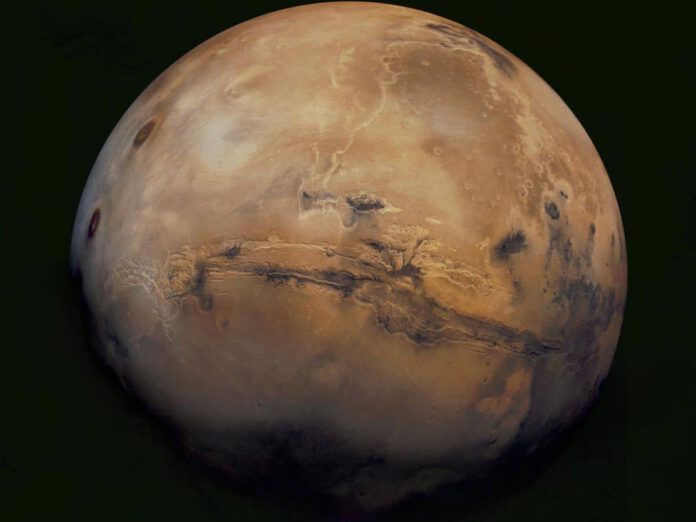
Mars Hit by More Meteorites Than Previously Thought
An analysis of data collected by the InSight Mars lander cautiously suggests that the red planet experiences many more impacts than previously believed. This could be potentially bad news for future Mars settlers.
The findings are reported in the journal Science Advances. Researchers based their cautious conclusions on measurements from the now inactive InSight Mars lander, which was previously deployed to detect marsquakes. Scientists have now linked eight of these marsquakes to eight newly discovered impact craters on Mars.
Eight Craters
Six of these craters are located relatively close to InSight’s landing site. The other two craters are further away and are recorded as the largest impacts ever detected by scientists, who have been observing Mars for decades.
Two Craters in a Short Span of Time
One particularly noteworthy observation is that one major impact occurred just 97 days after the other. “You would expect an impact of this size to occur maybe once every few decades, possibly only once in a lifetime, and here we have two such impacts occurring within just over 90 days,” said researcher Ingrid Daubar. “It could be a coincidence, but the chances are very, very small. It’s more likely that the two impacts are related (for example, due to the impacting stones being fragments of the same asteroid) or that the frequency of impacts on Mars is higher than previously thought.”
Detecting Impacts via Seismic Activity and Images
Previously, researchers could only detect new impacts on Mars through a time-consuming method of comparing images taken by orbiting probes of the planet’s surface. When a new crater appeared in these photos, it was proof that a space rock had collided with Mars. With InSight, active from 2018 to 2022, new opportunities to detect impacts arose; the lander was equipped with a seismometer capable of detecting the vibrations caused by a space rock striking Mars. These vibrations could sometimes indicate approximately where the impact occurred. For the new study, scientists initially examined InSight’s seismic data to find potential impacts. They then compared this data with images taken by the Mars Reconnaissance Orbiter to locate the corresponding craters and confirm that the vibrations were caused by impacts. In total, 8 impacts were identified this way. However, there may still be more awaiting discovery, according to Daubar. The InSight database contains at least 80 similar seismic signals likely caused by meteorite impacts. In the future, researchers hope to verify these signals with corresponding craters to confirm their impact origin.
Frequent Impacts
In the meantime, it appears that Mars is bombarded more frequently than once thought, Daubar explains. “Our results are based on a small number of available examples, but our estimate of the current impact frequency suggests that the planet is hit more frequently than we could see based on images alone.” Specifically, the researchers project that Mars is struck between 280 and 360 times a year by meteorites large enough to create craters 8 meters or more in diameter.
This new estimate of the number of impacts on Mars is five times higher than previous estimates, which were based on observations from Mars orbiters. The researchers believe they can explain this difference. “New craters are best observed on flat and dusty terrain, where they really stand out,” explains researcher Geraldine Zenhaeusern. “But that type of terrain covers only half of Mars’ surface. The sensitive seismometer on InSight, however, could hear any impact within its range.”
According to the researchers, relatively small impacts occur almost daily. Larger impacts, creating craters about 30 meters wide, occur approximately monthly. This may be concerning news for future manned missions to Mars, as it suggests astronauts on Mars may face greater threats from incoming space rocks than previously thought.











